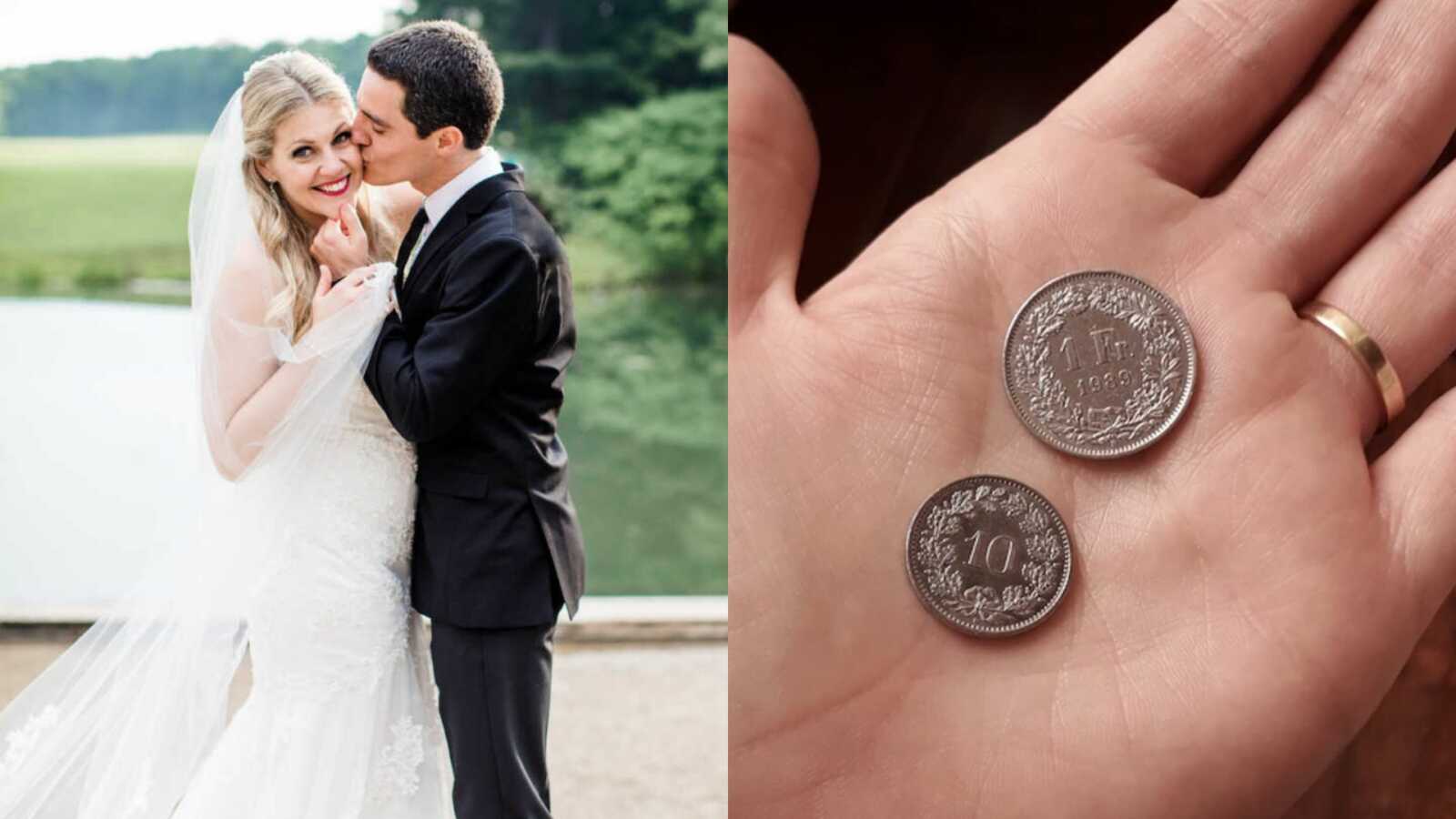“May 2020. Florida, United States. I sat in my usual chair on the back patio of my parents’ home.
About six weeks had passed since my husband traumatically and unexpectedly passed away. Suddenly a widow at only 36 years old, I was in a state of shock—and utter overwhelm.
My husband and I were from different countries (I’m from the US and he was from Argentina). While together, we were expats and spent most of our relationship living abroad, with the last country being Switzerland. Immediately after he passed, I moved back to the US and stayed with my family. I needed to be safe and still while I processed and healed.
As I sat with my mom on the patio, six weeks into my loss and grief, the tears flowed. At one point I got up from my chair to get more tissues from inside. I opened the door and headed into the living room. I crossed the open corridor into the dining room, and as I did, stopped frozen in my tracks.
In the middle of the empty dining room floor, something shiny and metallic caught my eye.
I inched closer until I was hovering over the object. I crouched down to get a better look.
I leaned forward and gasped, my breath lodged in my throat. My mouth fell to the ground.
On the middle of the hardwood floor of the empty dining room in the empty house was a perfect little stack of two Swiss Franc coins, arranged biggest and then smallest, the smaller one laid perfectly symmetrical on top.

My heart was racing; fresh tears streamed down my cheeks.
‘You’ve got to come see this!’ I called to my mom.
My husband and I had lived in Switzerland a couple years before, relocating there when I accepted a research position with an international organization. I was fresh out of my doctoral program and a newly minted specialist in evidence-based practice. While my husband and I had spent time in several countries together, Switzerland was one of our favorite places in the world—beautiful Alpine scenery, an incredible quality of life, and full of lifelong friends we’d made along the way.
However, our time in Switzerland had since come to a close, and by the time my husband had passed away, a year had passed since we left the country.
Back in my parents’ dining room in the US, staring down at the Swiss coins, a swirl of total disbelief mixed with absolute knowing coursed through my veins.
Intuitive knowing versus logical thought.
On one hand, I understood exactly who the coins were from. But logically? It couldn’t be!
My mom joined me in the corridor.
‘Amazing,’ she whispered, peering down at the little stack.
I picked up the coins and inspected them gently—feeling them, connecting to the energy pulsating through them and around me.
Ten-cent and one-Franc pieces; solid and very real.
At the time, we were deep in the throes of Covid-19 quarantine, and only my parents and I had been in the house over the last several weeks. We quickly confirmed neither my parents nor I had left the coins on the floor that day, and no one else would have physically been there to leave them either. (No one in human form at least.)
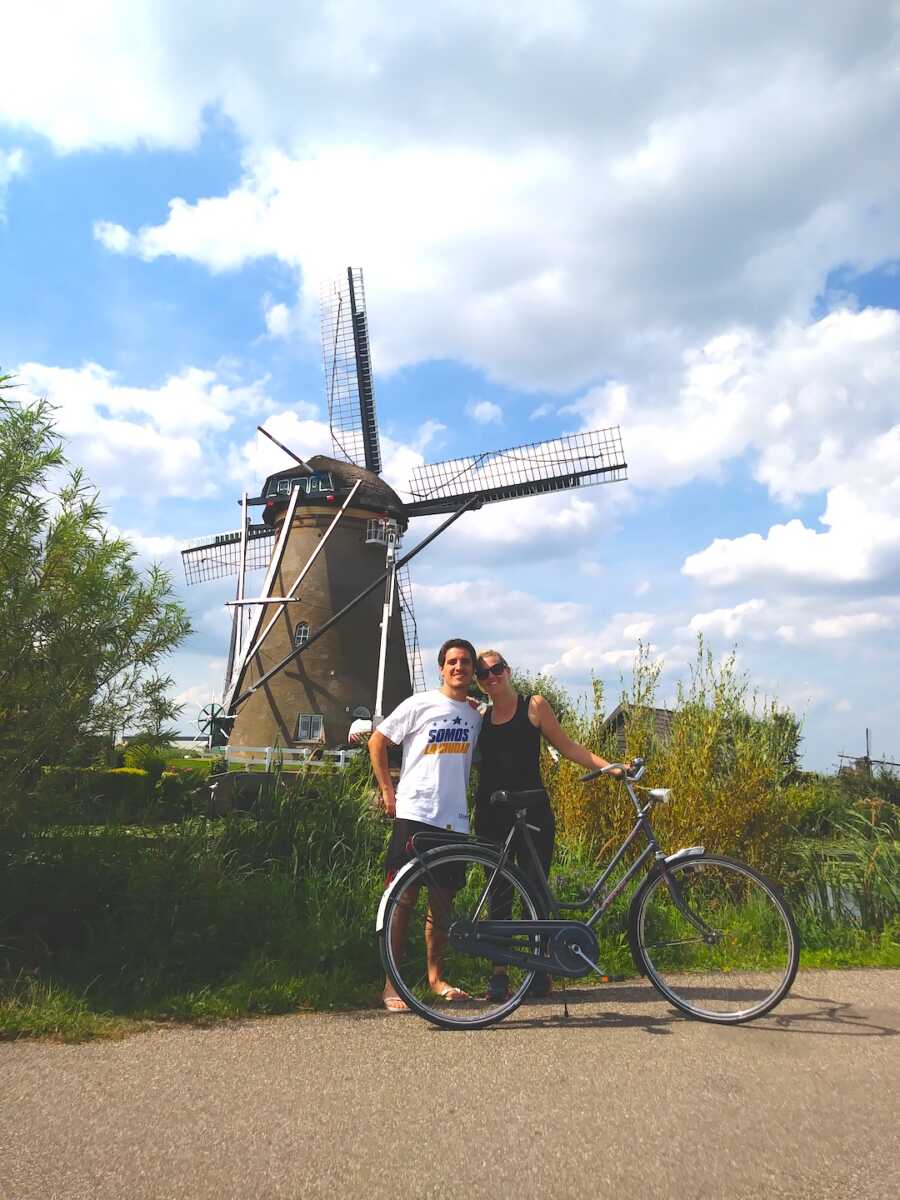
In addition, much time had passed since we would have even had Swiss Francs on hand. Even if my parents had brought a few home from a trip to see my husband and I, my family’s last visit had been two years prior. There was no way the coins would have lasted in a perfect little stack in this corridor for two years. It was the main thoroughfare of the house; without a doubt, someone would have noticed them or run them over.
I racked my brain for other explanations, but nothing came to mind.
There was no rational reason for any coins to be arranged how they were—let alone these coins.
With no other explanation, I accepted what my intuition already knew.
I’d just received a message from my husband in Spirit.
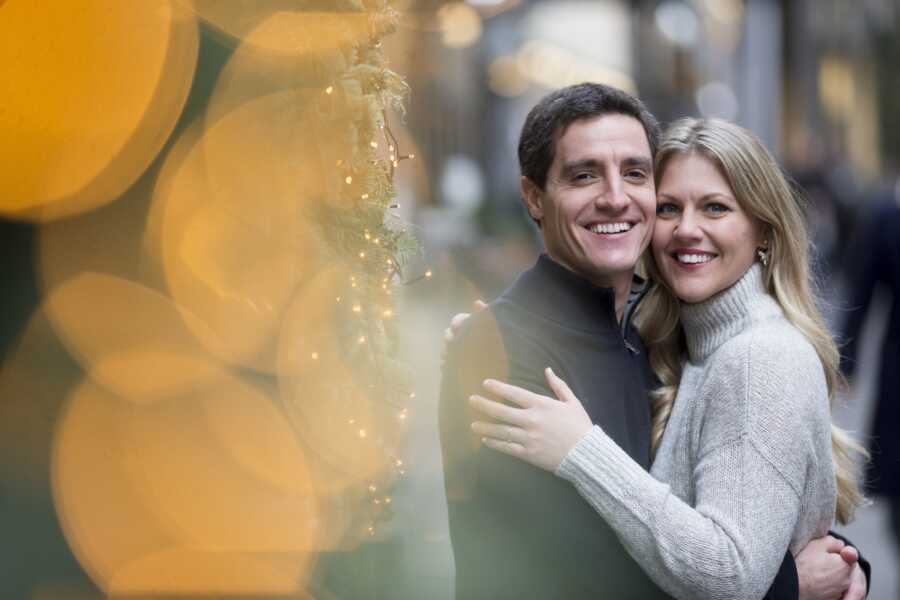
Other Signs
The Swiss Franc Experience wasn’t the first time my husband visited me from the spirit world, nor was it the last. In fact, his messages began the night after he died, and continue to occur a few times a week, now over two years since he passed away.
My husband sends his signs in various ways. Occasionally I smell brief whiffs of him without warning—the scent of his clothing, his skin, his hair. A few times, I’ve heard his voice—a poignant joke in his native language, Spanish—a joke only he would make.
For several months after he passed away, the lights at home flashed continuously without explanation, and other electronics also behaved oddly. I feel random cold air drafts without an obvious source and often hear gentle raps on the walls of my bedroom, especially when I’m resting, sleeping, reading, or meditating.
I’ve also picked up emotional and mental ‘knowings’ about his life and his passing, information I was unaware of before he died. Many of these messages were later validated by documents and writings he left behind—items I discovered after his death.

It’s not just me who receives his messages.
Like the coins, friends have received their own physical gifts—inexplicable, perfectly placed physical objects, with some sort of deliberate, personal meaning attached.
Many of us have had vivid dreams of my husband—so lifelike we feel the warmth of his body and his physical embrace.
We’ve also been ‘followed’ by butterflies, specifically Monarchs. The sentiment is usually, ‘I can’t explain it… but it was him.’
Every sign, every message, fills me with deep happiness, immense gratitude, and connection to the man I still love.
But my training as a researcher and expert in evidence-based practice keeps me on my toes.
Are the smells and dreams just triggered memories, lodged deep within my subconscious? Are the associations we attach to certain objects or insects just our imagination—a desire to be close again to the person we lost?

Analyzing the Signs
For those of us who’ve experienced the death of a loved one, and particularly those of us who think they’ve received a sign from that loved one since they passed—we want to know that it’s truly them before we can believe it.
As a researcher, my way of seeking confirmation has been to document the details of the signs I receive, and analyze them with an open, yet objective, mind.
Every time I receive a sign, I record the date, time, and details of what happened. I note who was with me when I received the message, as well as the physical sensations and emotions I felt when it happened (including if I feel skeptical). I keep Word files, audio recordings, and, when relevant, photographs and videos of the events. If a physical object (a ‘gift,’ as I call it) was given, of course I keep that, too.
To understand the messages and determine their validity, I then look at the information on three different levels. First, I review the objective facts of what happened with the message. Then I consider the emotional meaning attached to it. Finally, I sit with my intuition and ask, what am I feeling about a sign’s authenticity? Does it feel real to me?
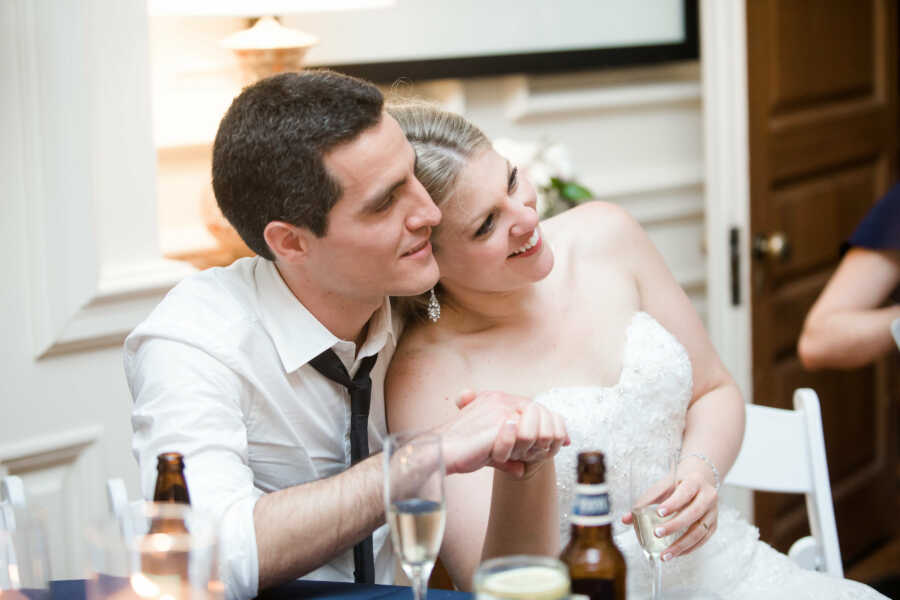
Level 1: Factual evidence of the message
When I first assess the factual evidence of a message, my main task is to understand the objective details of the event. From there I’m able to go back and observe patterns across the messages.
For example, I observed that over several months, a few nights a week I would be woken up at 3 a.m. by a touch, a tapping on the wall or ceiling, or a thick sensation that felt like my husband was in the room. As a researcher, evidence of a repeating event indicates that event is most likely not random.
In other words, it didn’t happen by chance. It wasn’t imagined.
Then I consider: a message might not be random, but what if it was caused by something else?
From there, I consider the mechanics and the counterfactuals of what happened. Is there anything else that could have caused a particular sign to occur? If a lamp is blinking, for instance, is the bulb fresh? Was there a power surge?
Some signs, namely the physical ones, are easier to assess. Air drafts, malfunctioning electronics—these lend themselves to investigation, as they likely have a tangible source (a loosely plugged-in chord, for instance). Emotional and sentient occurrences, however, are more difficult to validate. They’re invisible and inherently subjective, given we feel them, either physically or emotionally.
I can’t always answer the counter-questions I pose—but I ask them anyway.
Part of being a good social scientist is examining all other possible causes for an event. (Researchers are very averse to assigning causality!)
And, for me at least, part of being a young widow is seeking to validate my husband is still with me.
Level 2: Meaning and relevance of the message
After looking at the factual evidence, I then look at the meaning of the message. If it’s an object—like a coin, for instance—what is its relevance to my husband? To me? If it’s a particular song playing at a meaningful moment—what’s the song? At what moment is it playing? What does this all mean in the context of our relationship?
As I’ve observed, my husband’s messages and signs ooze his style and personality: incredibly sweet, usually hilarious and silly, and oftentimes specific to the person who receives them.
When he sends a sign, it’s like he was just in the room, his 100-watt smile beaming bright as he dropped off the gift himself.

Level 3: Feeling and intuition
Finally, and perhaps most importantly, I consider how I felt at the moment I received the message or sign. Did I emotionally feel my husband and his energy? Did I mentally know he was there?
Often, it’s a resounding yes, but sometimes, I’m not sure. I don’t judge; I just observe and notice how I feel. It’s a constant back and forth of going out to seek objective answers, and then coming back into myself to listen to my intuition—my gut.
And so I ask: What is my gut telling me about the experience? Does the experience feel genuine, or does it feel forced? Is it authentic, or is it a stretch? To me, a stretch feels different than authenticity, even when an authentic experience is logically hard to believe.
Sure, a feeling of authenticity is inherently subjective. But in dealing with life and death—things we can’t necessarily measure or see—subjectivity might be good enough. In fact, we may just have a lot to learn from it—such as learning to trust our own intuition.

The Dance Between the Logical Mind and Our Intuitive Senses
It’s a dance between navigating the longing to be connected to our loved ones who’ve passed away and the signs we have—versus our desire to confirm, beyond a shadow of a doubt, that they’re still with us.
That’s precisely why I’ve turned to my scientific training, to help me understand—and trust—the signs my husband is still very much here.
Ultimately, I’ve resolved that how a sign makes me feel is just as significant as what factually happened—if not more. When I found the stack of Swiss Francs, my husband’s presence was all around me. As I picked up the coins and rolled them over in my palms, it wasn’t just that I wanted him to be there… Energetically, he was.
I’ve also found throughout all the documenting, all the thinking, the most important part of receiving a message from my husband is just to enjoy it and then send gratitude and thanks. To turn his signs into a purely analytical exercise would discount their purpose. My husband isn’t sending messages to give me work! He’s sending them to let me know he’s here and he cares.
He wants to make sure I feel his love and guidance. He wants me to know he’s still here. And with the help of both the evidence and my intuition—I do.*
*As I sat on my bed writing this last sentence, there was a firm but gentle knock on the wooden headboard behind me. Hi, my love!”
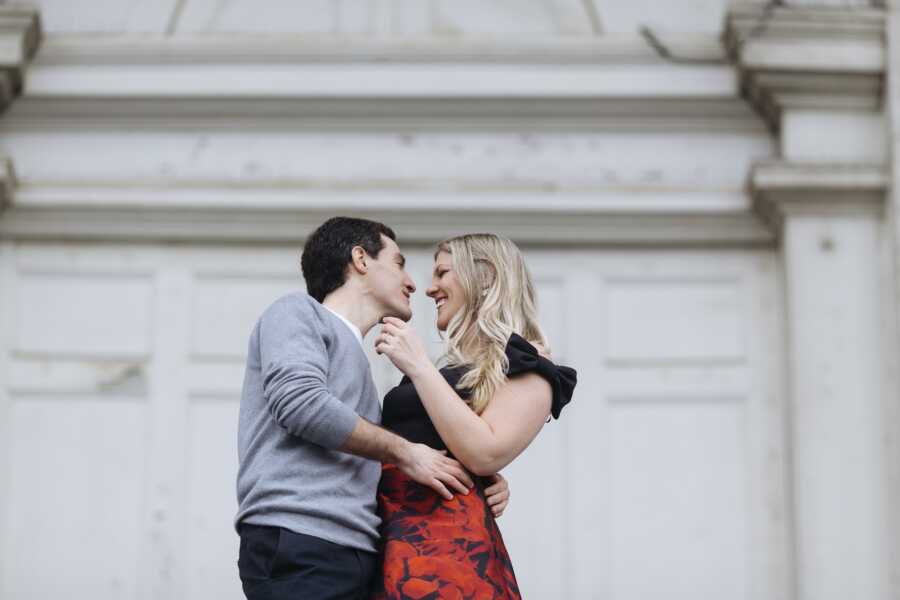
This story was submitted to Love What Matters by Dr. Lenore Matthew. You can follow her journey on Instagram, Facebook, and her website. Submit your own story here, and be sure to subscribe to our free email newsletter for our best stories, and YouTube for our best videos.
Read more from Lenore here:
Young Widow By Suicide Loss Addresses Importance Of Compassionate, Relevant Mental Health Screenings
Read more stories like this:
Do you know someone who could benefit from reading this? SHARE this story on Facebook with family and friends.

